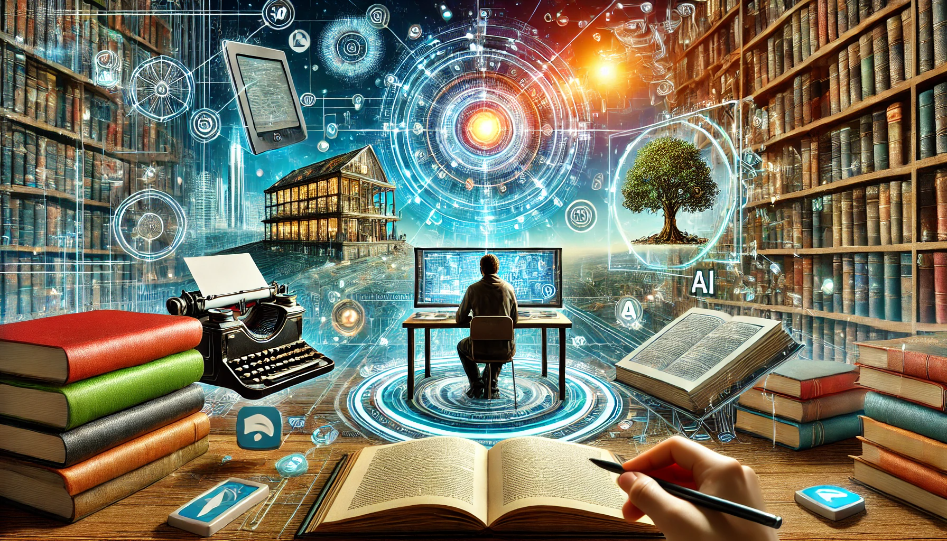The Intersection of Technology and Writing: A New Era for Books

In the past decade, the world has witnessed an unprecedented integration of technology into various aspects of life, and the realm of writing and books is no exception. From the way we write to the way we publish and consume literature, technology has revolutionized every step of the process. This article delves into the profound impact of technology on writing and books, exploring the opportunities and challenges it presents for authors, publishers, and readers alike.
The Evolution of Writing Tools
Gone are the days when writers relied solely on pen and paper or typewriters to craft their manuscripts. The advent of word processing software has made writing more efficient and accessible. Programs like Microsoft Word, Google Docs, and Scrivener offer a plethora of features that aid in drafting, editing, and organizing content. These tools not only enhance productivity but also allow writers to focus more on creativity by automating mundane tasks such as formatting and spell-checking.
AI-Powered Writing Assistants
Artificial Intelligence (AI) has taken writing to the next level with the introduction of AI-powered writing assistants like Grammarly, ProWritingAid, and even OpenAI’s ChatGPT. These tools provide real-time suggestions for grammar, style, tone, and even content improvement. AI can analyze vast amounts of text data to offer insights that help writers refine their work, ensuring it is polished and engaging. Moreover, AI can assist in generating content ideas, overcoming writer's block, and maintaining a consistent writing schedule.
The Transformation of Publishing
The publishing industry has undergone a significant transformation with the rise of digital publishing platforms. Traditional publishing, with its long and arduous process, is no longer the only route for authors. Self-publishing platforms like Amazon Kindle Direct Publishing (KDP), Smashwords, and Lulu have democratized the publishing process, allowing writers to publish their works independently. This shift has empowered countless authors to reach global audiences without the need for a traditional publishing deal.
E-books and Audiobooks
The popularity of e-books and audiobooks has surged, providing readers with more flexible and accessible ways to consume literature. E-readers like Kindle and Nook offer a portable and convenient alternative to physical books, while audiobook platforms like Audible cater to those who prefer listening to their favorite titles. These digital formats have expanded the reach of books, making literature more inclusive and adaptable to modern lifestyles.
Enhancing Reader Engagement
Technology has also transformed the way readers interact with books. Social media platforms, book recommendation engines, and online book clubs have created vibrant communities where readers can share their thoughts, reviews, and recommendations. Websites like Goodreads and BookBub connect readers with personalized book suggestions, fostering a sense of community and engagement around reading.
Interactive and Immersive Reading Experiences
Innovations in technology have given rise to interactive and immersive reading experiences. Enhanced e-books, with multimedia elements such as videos, audio clips, and animations, provide a more engaging reading experience. Augmented Reality (AR) and Virtual Reality (VR) technologies are being explored to create immersive storytelling environments, allowing readers to interact with the narrative in unprecedented ways.
Challenges and Considerations
While technology has brought about numerous benefits for the writing and publishing industry, it also presents certain challenges. The ease of self-publishing has led to an influx of content, making it difficult for readers to discern quality literature. Additionally, the reliance on digital platforms raises concerns about data privacy and the preservation of literary works in the digital age.
Balancing Tradition and Innovation
Authors and publishers must find a balance between embracing technological advancements and preserving the essence of traditional storytelling. While technology can enhance the writing and reading experience, it is crucial to maintain the integrity of the literary craft. Ensuring that technology serves as a tool to support creativity, rather than overshadowing it, is essential for the continued evolution of literature.
Conclusion
The integration of technology into writing and books marks a new era for the literary world. From AI-powered writing assistants to digital publishing platforms and interactive reading experiences, technology has opened up new possibilities for authors and readers alike. As the industry continues to evolve, striking a balance between innovation and tradition will be key to harnessing the full potential of technology in the world of literature. Embracing these changes while preserving the timeless art of storytelling will shape the future of writing and books for generations to come.



